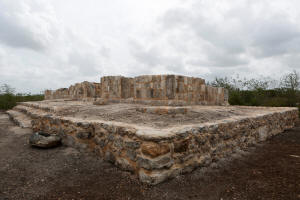|
The
site, called Xiol, has features of the Mayan Puuc style of
architecture, archaeologists said, which is common in the
southern Yucatan Peninsula but rare near Merida.
"We think more than 4,000 people lived around here," said Carlos
Peraza, one of the archaeologists who led the excavation of the
city, estimated to have been occupied from 600-900 A.D.
"There were people from different social classes... priests,
scribes, who lived in these great palaces, and there were also
the common people who lived in small buildings," Peraza said.
Researchers also located nearby burial grounds of adults and
children, who were interred with obsidian and flint tools,
offerings and other belongings.
Remains of marine life were also discovered in the area,
suggesting the city's inhabitants complemented their
agricultural-based diets by fishing along the nearby coast.
Xiol was discovered after construction began on an industrial
park. That will still be built, though the archaeological
remains will be preserved, according to the owners of the land.
"With time, urban sprawl (in the area) has grown and many of the
archaeological remains have been destroyed... but even we as
archaeologists are surprised, because we did not expect to find
a site so well preserved," Peraza said.
(Reporting by Lorenzo Hernandez; Writing by Kylie Madry; Editing
by Rosalba O'Brien)
[© 2022 Thomson Reuters. All rights
reserved.]
This material may not be published,
broadcast, rewritten or redistributed.
Thompson Reuters is solely responsible for this content.

|
|




